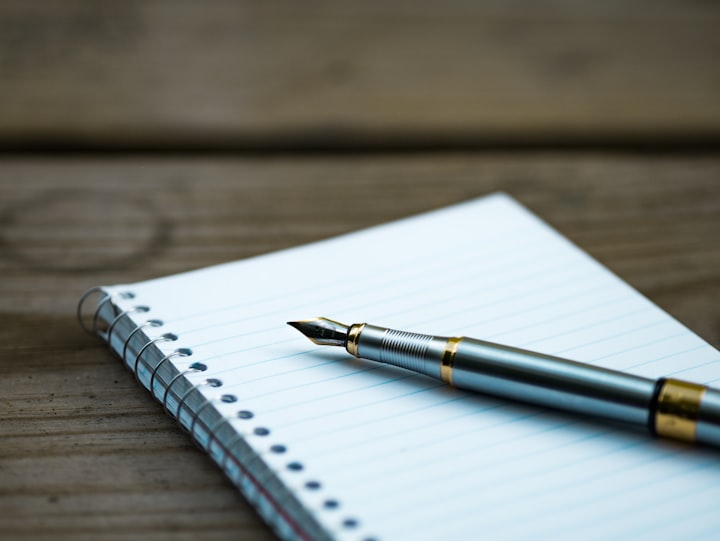
From taking singing lessons at Sylvia Young Theatre School, I have learned so much about the art of singing, especially the importance of the body as well as the voice.
It is not all about the voice, you know! The body also plays a vital part in creating and maintaining a concrete and fluid sound.
The first thing to take note and be aware of is your "attractor state" or "default setting." This refers to the way your voice and body moves and operates in a way that you are comfortable and familiar with. This can be influenced by your upbringing, your accent, previous training, and physiology.
Simply, your attractor state is your comfort zone, and in order to improve and expand your vocal abilities, you will have to work beyond your attractor state.
In order to find what your attractor states are, a good exercise is standing in front of a mirror where you can see your whole body and stand in a neutral position.
Your legs should be shoulder width apart, with knees relaxed, your pelvis not too far back or forward, no tension in your abdominal muscles, shoulders are relaxed, and making sure your weight is equally distributed, and your head should feel as though you are being lifted by a piece of string.
It is important to ensure you have good postural alignment, because if you are tense, especially in your abdominal area, it makes it harder for you to control your in-breath and out-breath.
If you feel your abdominal muscles are gripping or tensing, it could be because you're nervous, you are breathing in too quickly, you are breathing out too quickly, your body is not symmetrical, or you are using force when breathing.
DO NOT use force when breathing. You need to be as comfortable as possible.
It does take time to find your alignment, and it is uncomfortable at first, as you are trying to make your body move in a way that it is not used to.
What I find very helpful is every day I stand in front of a long mirror and slowly find my alignment. Once I have done that, I practise breathing by taking in-breath for five counts, holding the breath, and the letting it out for five counts, without going back into my attractor state and losing my alignment.
Another thing to take into consideration is your mouth, more importantly your jaw and your tongue.
Personally, my jaw gets really tense and often clicks, and my singing teacher told me a few exercises to help me loosen my jaw.
One, you can massage the affected muscle by using your index and middle finger, applying firm yet gentle pressure, then work around the entire jaw and mouth area with small, circular motions.
Secondly, whilst having good alignment, let your jaw drop in a relaxed position (do not force the jaw to drop) and then, as if you were a puppet or a nutcracker, move the lower part of your jaw up and down slowly.
Once you feel comfortable with the first two exercises, start introducing your tongue by placing the tip of your tongue against the back of the lower set on your teeth and slowly roll out your tongue, keeping the lower part of your jaw relaxed. The difficulty with this exercise is that you have to try and not apply pressure to the lower part of your jaw whilst not moving the lower part of the jaw. This exercise is meant to help strengthen your tongue as well as control your jaw.
Now, moving onto the tongue. Your tongue should lie relatively flat in your mouth, except when you’re making consonant and vowel sounds that require you to arch your tongue. Isolating the movement of the tongue and jaw is important because you don’t have to press your tongue down to move your jaw or move your jaw when your tongue moves. The tongue and jaw are members of the same team, but they don’t have to play at the same time.
From looking and a variety of exercises, the dummies website has a few simple ways of helping you to make sure your tongue is released:
- Without moving your jaw, say “Yuk.” Saying the y allows you to move the back of your tongue.
- Again, without moving your jaw, say “Ya-ya-ya-ya-ya.” Did you notice how your tongue was bouncing?
- Bounce your tongue again and then let it rest in your mouth. Notice what the tongue feels like when it’s resting in your mouth. It’s not tense or pushing up or down. It’s just lying in your mouth.
- Say “Ya-ya” several times, and let your jaw bounce or move up and down as you say it. Notice how it rests in place after you say the syllables. You want your jaw, like your tongue, to hang loose, ready to move at any moment—but not tense.
Overall, the way your body is aligned, including your jaw and tongue, can have a huge impact on the way you sing. These are a few exercises that have helped me, but I would always advise to try something that works for you and that does not cause you any discomfort.
However, I will suggest when you are practising singing to do so in front of a mirror or record yourself so you are able to know what you have done well and what you can improve on.
About the Creator
Morgan Black
Actress and Model from London.
Trying to be a bit more creative!






Comments
There are no comments for this story
Be the first to respond and start the conversation.